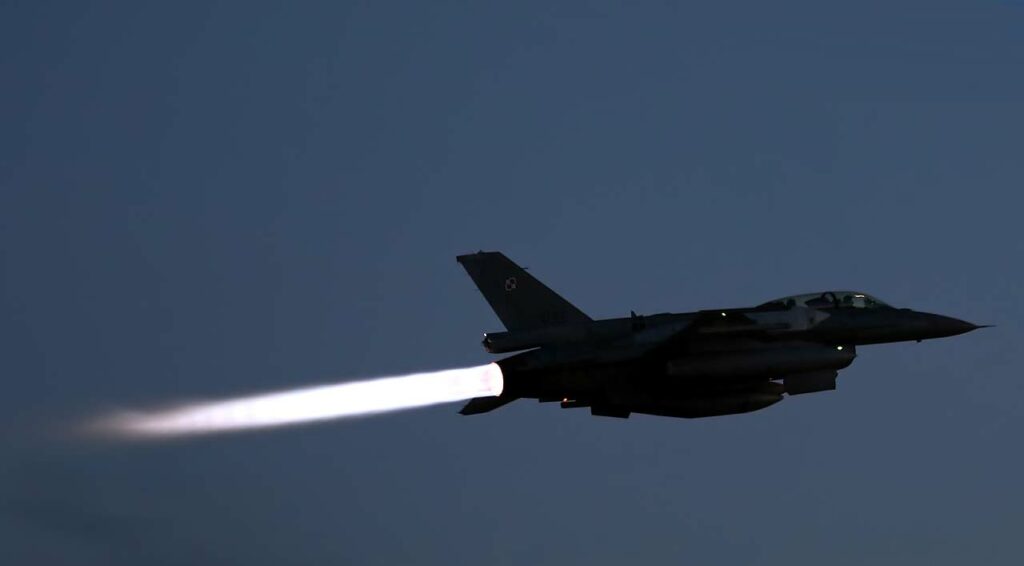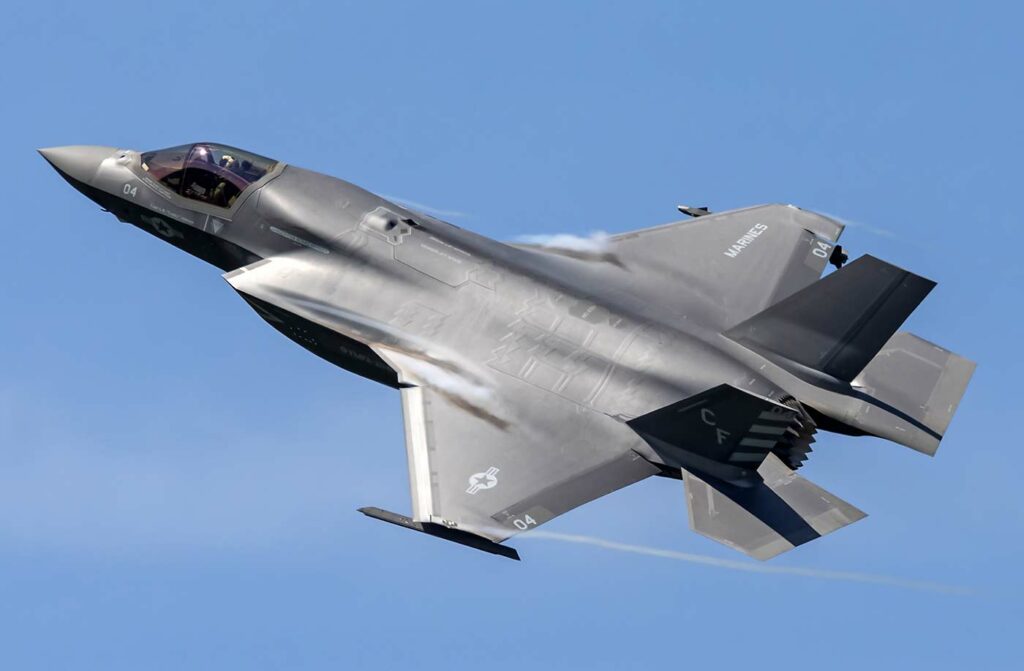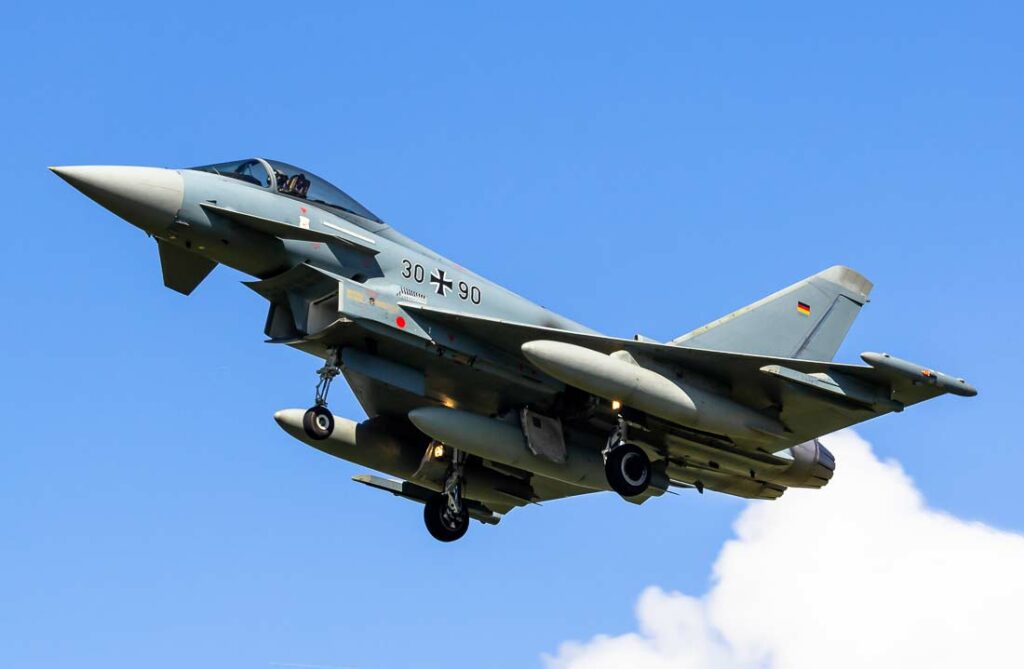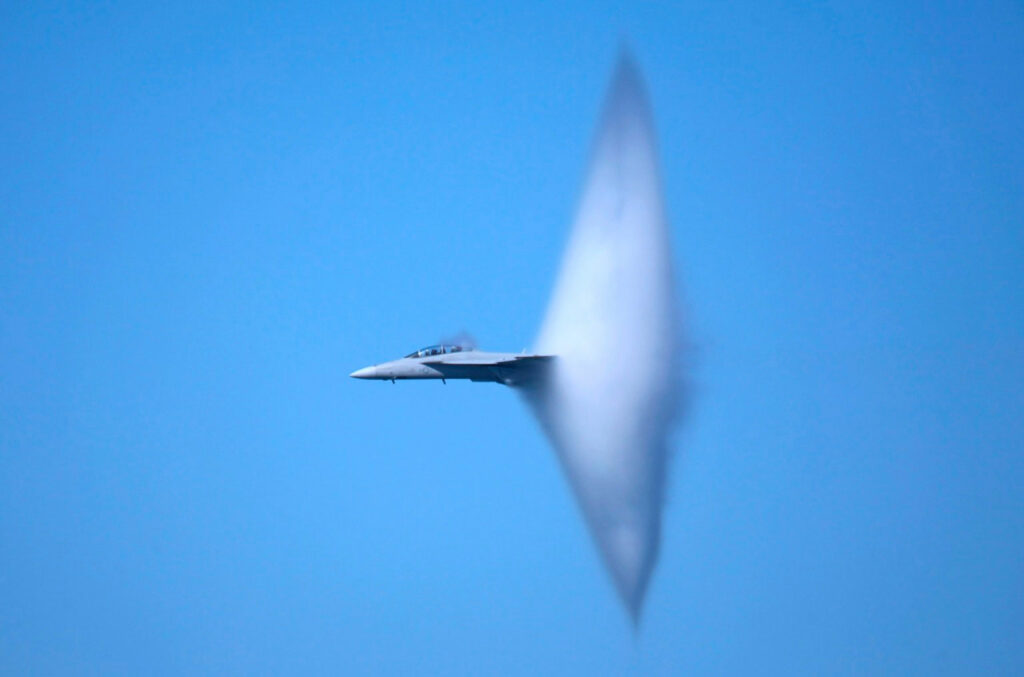
Explore the quietest fighter jets, their noise reduction technologies, tactical advantages and future innovations.
The importance of silence in fighter aircraft
Silence or noise reduction in fighter aircraft is a crucial element in improving stealth and operational efficiency. In military aviation, the most effective fighter aircraft is often the one that can carry out its missions undetected. Here are some specific reasons why noise reduction is essential:
Furtivity: Quiet fighters are harder to detect by enemy acoustic radar systems. For example, the F-35 Lightning II uses noise reduction technologies that reduce its sound signature. The F-35 is reported to be around 10 decibels quieter than its predecessors, significantly reducing the distance at which it can be detected by acoustic radar.
Operational effectiveness: A quiet aircraft can approach a target or penetrate enemy airspace with greater stealth, increasing the chances of mission success. For example, studies show that a 20 dB reduction in perceived noise can halve the zone of detection by enemy systems.
Pilot health and maintenance: Quieter aircraft reduce noise exposure for pilots and ground staff, which can reduce the risk of hearing damage. In addition, noise-reduction technologies can contribute to the longevity of aircraft components by reducing vibration and stress on the structure.
Acceptance and regulation: With international regulations on aircraft noise becoming increasingly stringent, having a quiet fighter allows greater operational flexibility. This allows aircraft to operate in areas with strict noise restrictions without compromising missions.
Noise discretion has become a sought-after feature in the design of modern fighter aircraft, aimed at increasing stealth, reducing detection, and improving the overall effectiveness of military air operations. Noise reduction figures vary according to model and technology, but the objective remains the same: to make fighter aircraft as quiet as possible to maximize their tactical effectiveness.

Noise reduction principles
Noise reduction techniques
Noise reduction in fighter aircraft involves a series of advanced techniques and innovative technologies. Here are some of the most commonly used methods:
Aerodynamic design: The aerodynamics of an aircraft have a direct influence on the noise produced, particularly that generated by air friction. Stealthy shapes, smooth surfaces and continuous contours reduce drag and turbulent noise. For example, rounded wing leading edges can reduce leading edge noise by up to 40%.
Sound-absorbing materials: The use of composite materials and special coatings can absorb or attenuate noise. Porous or cellular materials are often used in fuselage and engine nacelle construction to absorb engine noise. These materials can reduce noise by 10 to 30 dB, depending on application and placement.
Engine and exhaust system modifications: Engines are a major source of aircraft noise. The use of low afterburning engines, fan nozzles and noise attenuation devices such as silencers or acoustic diffusers can significantly reduce noise. For example, innovations in engine nozzles can reduce noise by up to 20 dB.
Active noise reduction technologies: Some aircraft use active noise control systems that emit sound waves in opposite phase to cancel out certain frequencies of engine noise. These systems can reduce cabin noise by up to 10 dB.
Noise measurement
Noise measurement and analysis are crucial in assessing the effectiveness of noise reduction techniques. Here’s how noise is usually measured:
Units of measurement: Noise is mainly measured in decibels (dB), a logarithmic unit that describes the ratio of sound intensity to a reference level. dB(A) is often used to measure aircraft noise, as it weights frequencies to match the sensitivity of the human ear.
**For fighter jets, noise is often measured during take-off, low-level passes and landing. Microphones positioned at strategic points around airfields capture noise data, which is then analyzed to determine noise levels in dB.
In-flight analysis: In-flight measurements are also carried out to understand how noise propagates and behaves at different speeds and altitudes. This data is essential for fighter aircraft, where performance at high speeds and altitudes is critical.
Noise reduction is a complex and technical area of military aeronautics, involving a combination of advanced aerodynamic design, innovative materials, engine and exhaust modifications, and noise control technologies. Accurate noise measurements are essential to validate the effectiveness of these techniques, and to comply with regulations while improving the operational capabilities of fighter aircraft.

Examples of relatively quiet fighter aircraft
F-35 Lightning II
The F-35 Lightning II is often cited as an example of an innovative fighter with significant noise reduction, mainly due to its design and advanced technologies.
Noise reduction: The F-35 has been designed with an emphasis on noise reduction. Although exact data on noise reduction is classified, reports indicate that the F-35 is around 10 dB quieter than its predecessors such as the F-16, particularly during certain maneuvers and flight configurations. This represents a significant reduction, given that every 10 dB decrease is perceived as a halving of the noise level to the human ear.
Specific technologies: Several technologies contribute to the F-35’s noise reduction:
- Aerodynamic design:** The F-35 has a stealthy shape that minimizes drag and turbulent noise.
- Pratt & Whitney F135 engine:** This engine incorporates advanced noise-reduction technologies, including an innovative fan nozzle and noise-attenuating components in the engine itself.
- Sound-absorbing materials:** The F-35 uses composite materials and special coatings to absorb noise at source.
Other fighter aircraft
Other fighter jets have also been designed or modified to be quieter:
Eurofighter Typhoon: Although designed primarily for performance, the Typhoon has benefited from noise-reduction technologies, notably in the design of its EJ200 engines and the use of sound-absorbing materials. Reports indicate a significant reduction in noise compared with previous generations of fighter aircraft.
Dassault Rafale: The Rafale uses noise-reduction techniques in its M88 engines and overall design. Specific noise-reduction measures have been taken, including optimization of the aircraft’s shape and the use of noise-absorbing materials, leading to a lower noise signature than that of its predecessors.

Comparative analysis
In comparing these aircraft, it’s important to note that noise reduction depends on many factors, including mission, flight configuration and environment. For example, in combat configuration with active afterburner, noise reduction may be less pronounced. However, in normal flight, technologies integrated into aircraft such as the F-35 and Rafale show a notable reduction in noise compared with earlier generations.
Although specific data varies, the emphasis on noise reduction in modern fighter aircraft is evident, with technologies ranging from aerodynamic design to advanced materials and engine innovations. The F-35 Lightning II is often highlighted as a leader in this field, but other aircraft such as the Eurofighter Typhoon and Rafale follow close behind with their own noise-reduction innovations.
Advantages of low noise
Tactics and strategy
Sound stealth offers significant advantages in terms of tactics and strategy, enhancing a fighter’s ability to operate effectively and unobtrusively.
Discreet approaches: A quieter aircraft can approach a target undetected, increasing the probability of mission success. For example, a 10 dB reduction in engine noise can reduce the detection range of enemy acoustic radars by several kilometers, offering a crucial tactical advantage.
Detection reduction: Silent aircraft are less likely to be detected by acoustic surveillance systems, which is particularly useful during reconnaissance or infiltration missions. The introduction of noise reduction technologies in aircraft such as the F-35 has shown a reduction in acoustic signature sufficient to influence tactical decisions and mission plans.
Survivability in hostile environments: In heavily defended environments, the ability to minimize noise signature can be the difference between detection and evasion. Noise reduction improves survivability by reducing the chances of early detection and engagement by air defense systems.
Operational benefits
The operational benefits of sound discretion can be demonstrated through specific cases where it has played a crucial role:
Special operations: In operations requiring a high degree of stealth, such as infiltration or extraction by special forces, fighters and helicopters with reduced sound profiles have a distinct advantage. For example, special operations in hostile territories often require silent approaches to minimize detection.
Reconnaissance and surveillance: For reconnaissance missions, reducing the sound signature enables fighter jets to gather valuable intelligence without alerting the enemy. Stealth fighters with significant noise reduction can operate closer to target areas while remaining undetected.
Historical examples: Although specific details are often classified, it has been reported in various conflicts that fighter aircraft with reduced noise capabilities have succeeded in missions that would otherwise have been compromised by early acoustic detection.
Acoustic stealth considerably enhances the tactical and operational capabilities of fighter aircraft. It enables more discreet approaches, reduces the probability of detection, and increases survival in hostile environments. Specific cases and reports of successful missions thanks to noise reduction testify to the strategic importance of noise stealth in modern military air operations.

Challenges and future considerations
Current limitations
Noise reduction in fighter aircraft is subject to significant challenges and limitations, particularly in terms of the trade-off between performance and noise discretion.
Trade-off between performance and silence: Increasing noise discretion can often lead to a reduction in performance. For example, techniques that reduce engine noise can limit thrust and, consequently, aircraft speed or maneuverability. Aircraft have to balance noise reduction with the need to maintain optimum flight performance.
Weight and cost: Adding sound insulation materials and designing special structures to reduce noise can increase aircraft weight and cost. Each additional kilogram affects flight performance and payload capacity, and each additional technology increases the overall cost of the program.
Durability and maintenance: Noise reduction technologies, especially those involving complex mechanical components or special materials, may require more frequent maintenance or be less durable over the long term, affecting the aircraft’s operational availability.
Future innovations
Looking to the future, several areas of innovation could transform noise reduction in military aeronautics:
Advanced materials: The development of lightweight yet effective noise-absorbing materials could reduce the trade-off between weight and noise discretion. Nanomaterials, metamaterials or advanced composites could offer superior acoustic properties without compromising performance.
Revolutionary engine design: Future engines could incorporate radically different designs that reduce noise without sacrificing power. For example, electric or hybrid motors, although far from a reality for fighter aircraft, could offer significantly lower noise levels.
Active noise reduction systems: Active noise control technologies, which use sound waves to cancel out engine noise, could become more sophisticated, efficient and practical for use in demanding military environments.
Artificial intelligence and optimization: Using AI to optimize aerodynamic design and flight paths could reduce noise without affecting performance. AI could also help actively manage noise reduction systems in real time to adapt to changing conditions.
Although noise reduction in fighter jets presents significant challenges, particularly in terms of the trade-off between silence and performance, the ongoing evolution of technology points to promising advances. Innovation in materials, engine design and active noise reduction systems, as well as the application of artificial intelligence, could transform the future of noise discretion in military aeronautics.
War Wings Daily is an independant magazine.